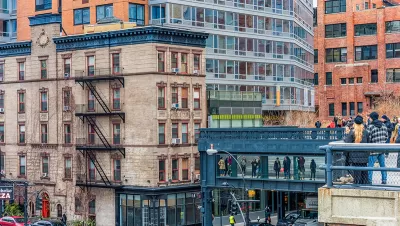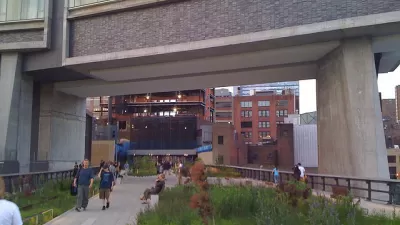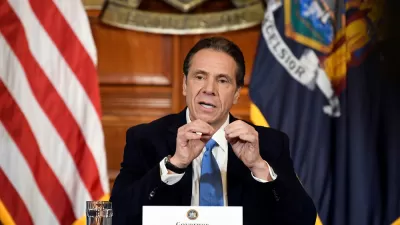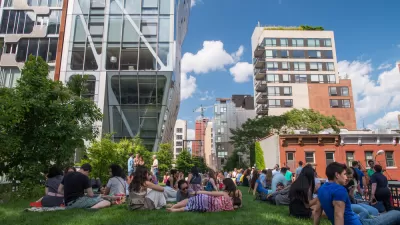A new debate has emerged, starting from a source very close to the project, about the effects of the High Line in New York City.

Criticisms of the High Line have ben far less frequent and much younger than the heaps of praise offered the transformative project. Much more common than concerns about gentrification or displacement, were willing imitations of the many of the component ideas at work on the High Line—an elevated structure given to pedestrians, a focus on plantings, community ownership of public space and much more.
In an article by Laura Bliss for CityLab, however, Robert Hammond, one of the co-founders of the Friends of the High Line and the current executive director of the organization, echoes some of the criticisms of the High Line. In his own words, as quoted in the article, Hammond says: "We were from the community. We wanted to do it for the neighborhood," adding, "Ultimately, we failed."
According to Bliss, Hammond and the Friends of the High Line are "course correcting," adding paid listening sessions, paid jobs-training programs, and new events, like a summer series of Latin dance parties.
But, writes Bliss, "there’s a lot the High Line could have done before it opened that it can’t make up for now. Its designers might have paid stronger attention to a few basic principles of attractive public spaces, and specifically those that attract low-income and minority park-users." The limited number of access points and the long list of prohibitions posted around the park provide two examples of design decisions that have produced predictable results. "Perhaps more critically, Friends of the High Line could have worked harder from the start to advocate for affordable housing," adds Bliss.
Bliss writes a lot more on the subject, also examining other public space projects around the city to show that the High Line's example has helped other advocates and designers avoid the same mistakes.
Steve Cuozzo, writing for the New York Post, takes umbrage with the characterization of the High Line as a failure, however. "[Hammond's baffling stroke of creator’s remorse lent dubious gravitas to the High Line Backlash," writes Cuozzo.
Cuozzo recounts criticisms of the project in recent years, offered by Mayor Bill de Blasio and the head of the tenants association at the nearby lower-income Fulton House project, describing them as "ridiculous" and "idiotic." Cuozzo's concluding thought: "I hope Hammond stops blaming himself for 'failure' and accepts that he helped bring forth a true wonder of our age."
FULL STORY: The High Line's Next Balancing Act

Trump Administration Could Effectively End Housing Voucher Program
Federal officials are eyeing major cuts to the Section 8 program that helps millions of low-income households pay rent.

Planetizen Federal Action Tracker
A weekly monitor of how Trump’s orders and actions are impacting planners and planning in America.

Ken Jennings Launches Transit Web Series
The Jeopardy champ wants you to ride public transit.

New Jersey Lawsuit Targets Rent-Setting Algorithms
The state of New Jersey is taking legal action against landlords and companies that engage in what the state’s Attorney General alleges is illegal rent fixing.

Washington Legislature Passes Rent Increase Cap
A bill that caps rent increases at 7 percent plus inflation is headed to the governor’s desk.

From Planning to Action: How LA County Is Rethinking Climate Resilience
Chief Sustainability Officer Rita Kampalath outlines the County’s shift from planning to implementation in its climate resilience efforts, emphasizing cross-departmental coordination, updated recovery strategies, and the need for flexible funding.
Urban Design for Planners 1: Software Tools
This six-course series explores essential urban design concepts using open source software and equips planners with the tools they need to participate fully in the urban design process.
Planning for Universal Design
Learn the tools for implementing Universal Design in planning regulations.
Heyer Gruel & Associates PA
Ada County Highway District
Institute for Housing and Urban Development Studies (IHS)
City of Grandview
Harvard GSD Executive Education
Toledo-Lucas County Plan Commissions
Salt Lake City
NYU Wagner Graduate School of Public Service





























